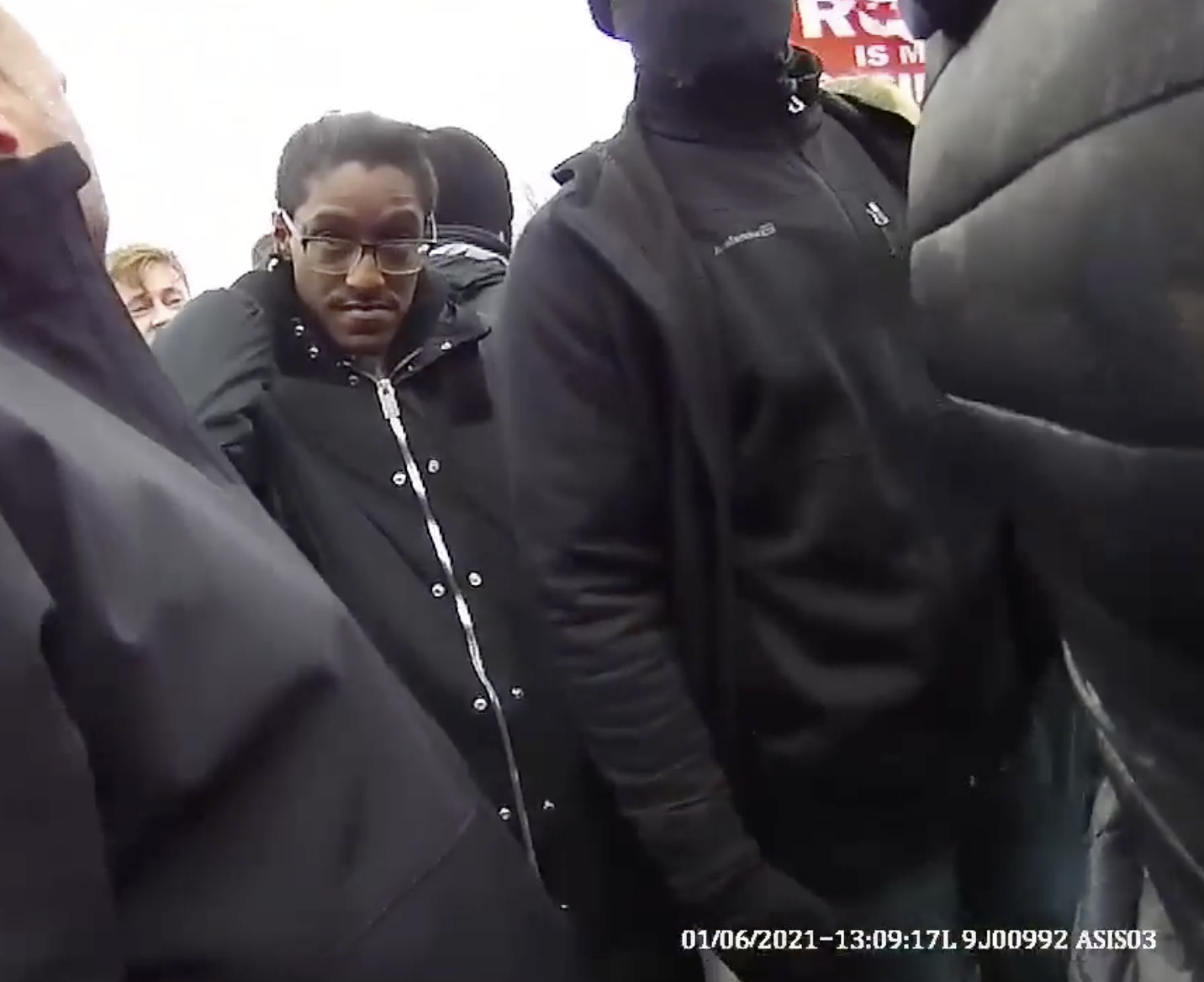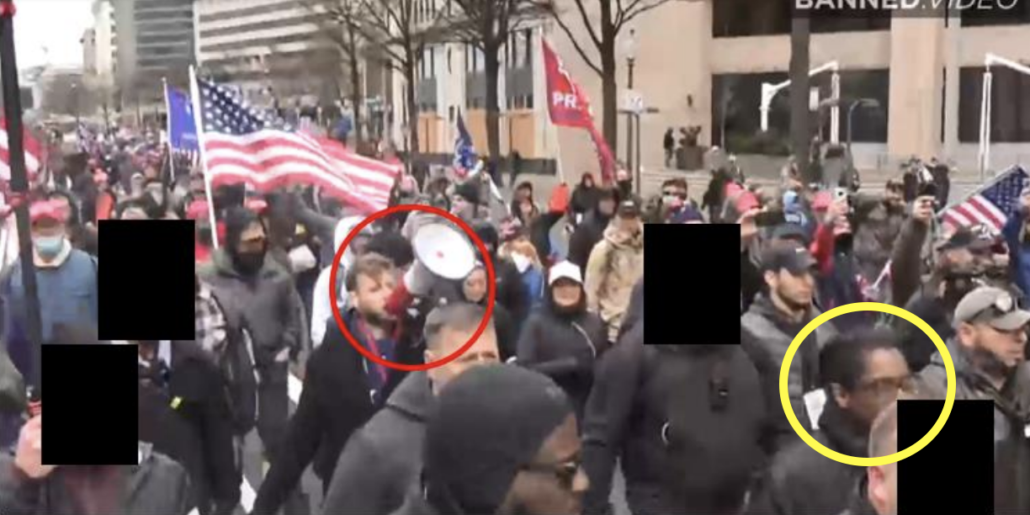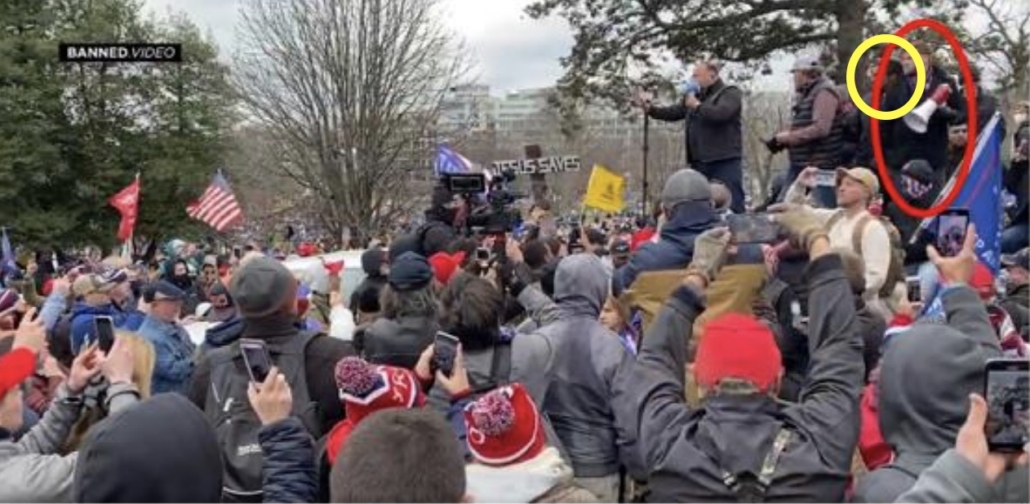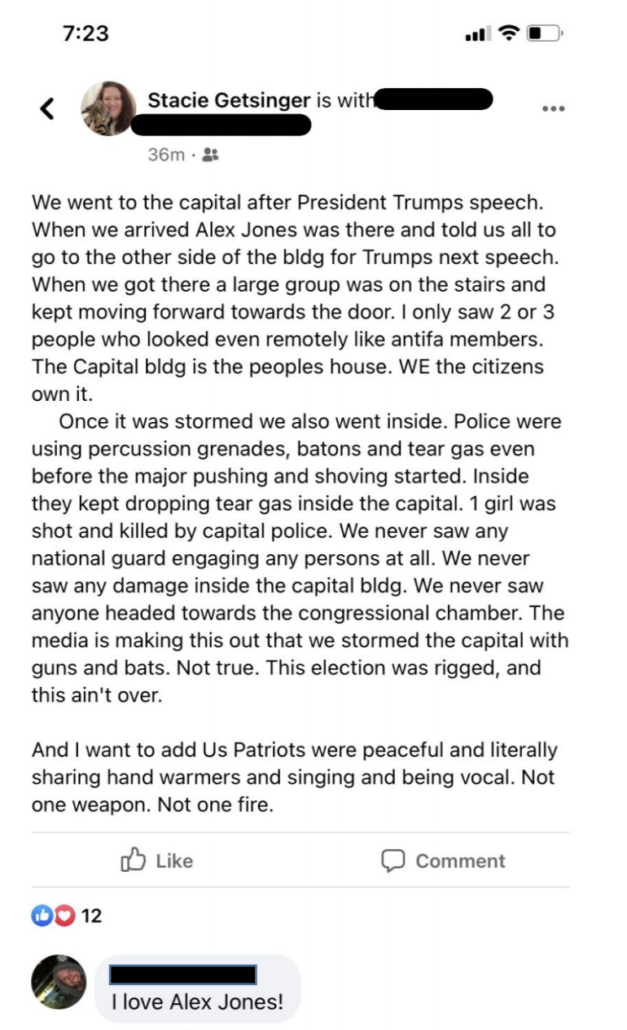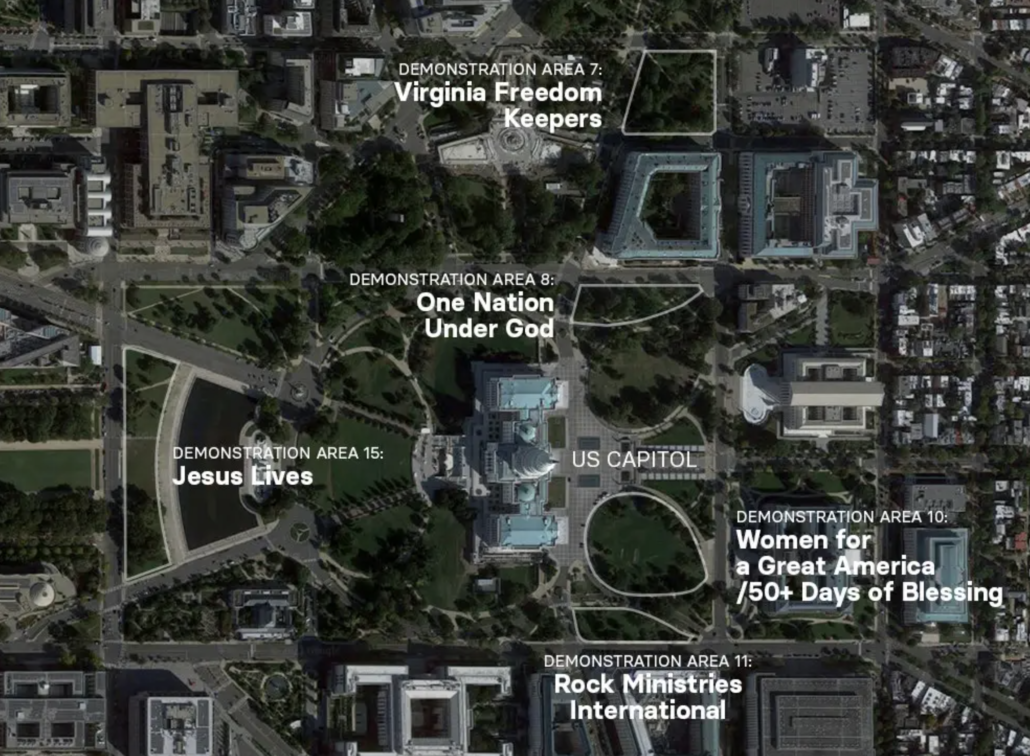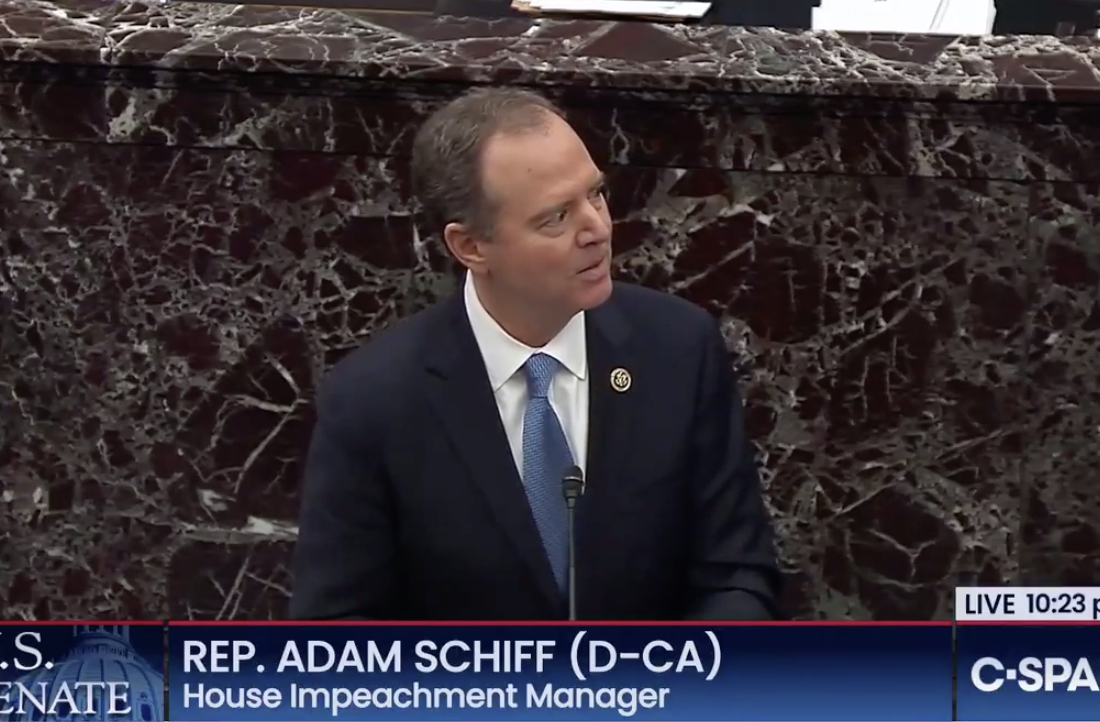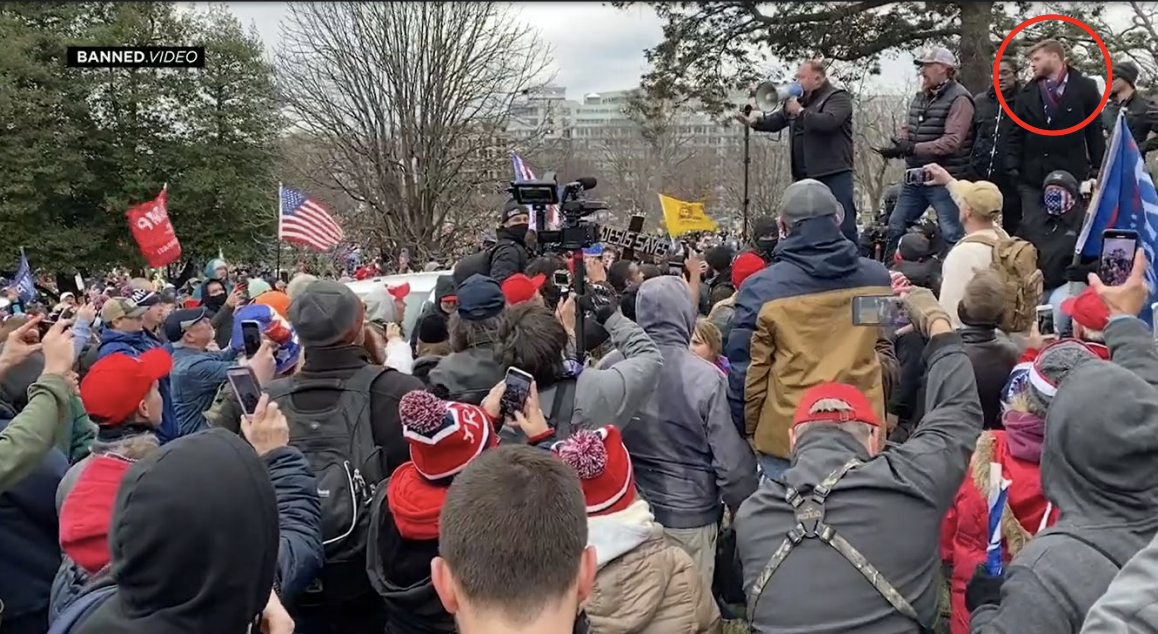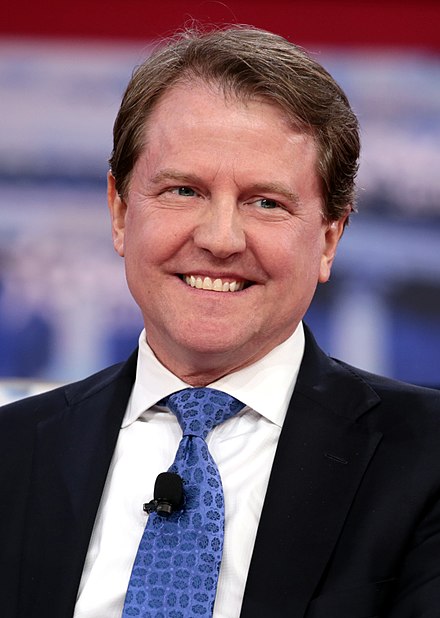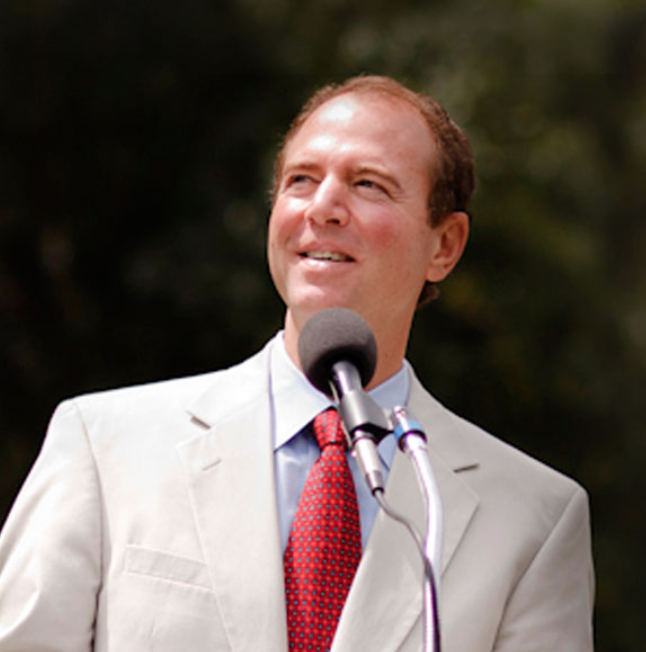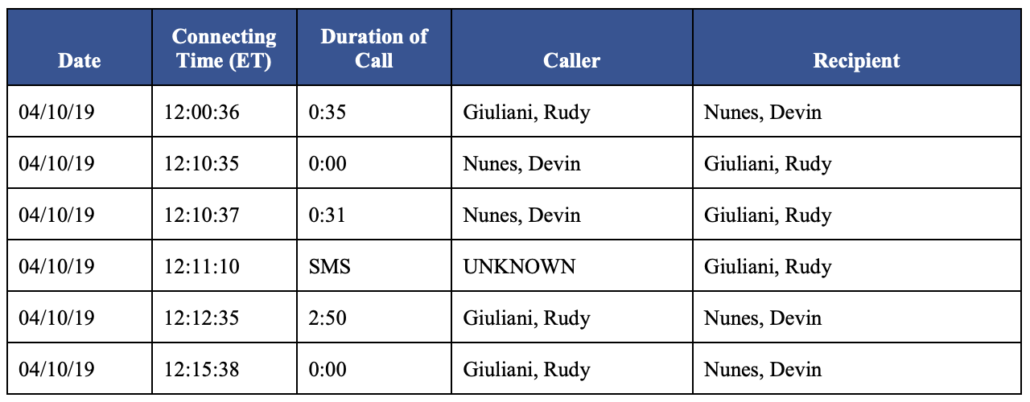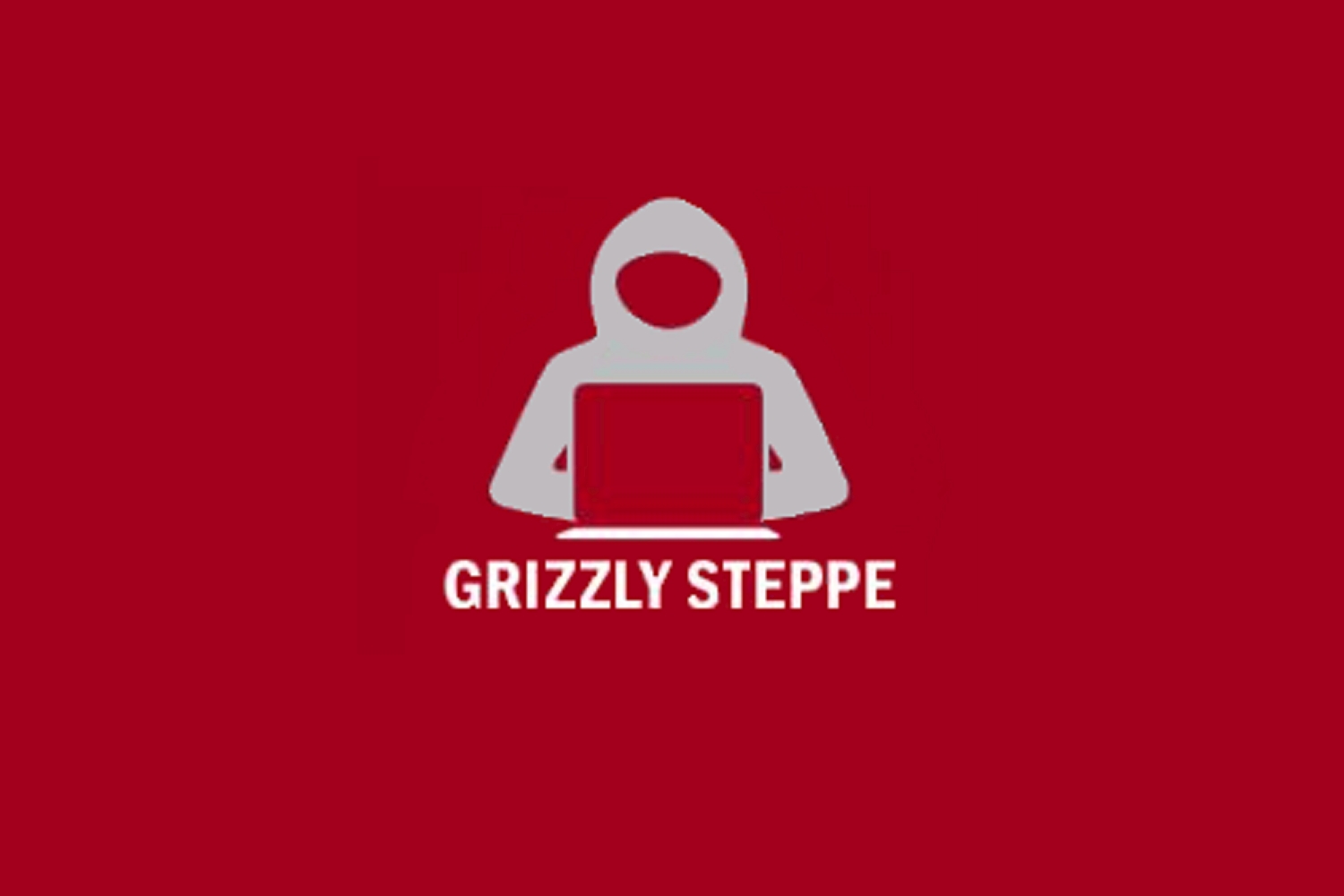Fresh off the weekend of Roger Stone’s trial, prosecutors got Rick Gates to testify, and then called former FBI Agent Michelle Taylor back on the stand. Ostensibly, they needed to call Taylor to introduce a transcript of a scene from Godfather II that Stone kept using to try to convince Randy Credico to lie to the House Intelligence Committee, something that the two sides had been debating throughout the first week of the trial.
But the first thing prosecutors did when they got their FBI witness back on the stand was to bring Guccifer 2.0 into it.
Q. When you first testified last week, do you remember testifying about the release of some emails of the Democratic National Committee by an organization called WikiLeaks on July 22nd, 2016?
A. Yes, I do.
Q. What was the name of the online persona or figure who took credit for hacking or obtaining those documents from the Democratic National Committee?
A. Guccifer 2.0.
Q. During Mr. Stone’s testimony before the House Intelligence Committee, was he asked about that persona, Guccifer 2.0, and that alleged hack?
A. Yes, he was.
MR. ZELINSKY: I would like to publish now, please, for the witness and the jury, what’s been admitted as Government’s Exhibit 1. This is page 28 of Government’s Exhibit 1.
BY MR. ZELINSKY: Q. Ms. Taylor, I want to direct your attention to the portion of — oh, and, Ms. Taylor, just to remind the jury, what is Government’s Exhibit 1?
A. This is a transcript of Mr. Stone’s testimony before HPSCI.
Q. I’ve put on the screen in front of you page 28 of the transcript. Can you read for us, please, the question and answer that I have highlighted there?
A. “MR. SWALWELL: In 2016, August of 2016, you and the American public are aware, from press reporting, that Russia is accused of hacking democratic emails, is that — “MR. STONE. Yes.”
Q. I want to direct your attention now to page 29, the next page of the same exhibit. Can you read, please, the question and answer that I’ve highlighted on page 29 of Government’s Exhibit 1, the transcript?
A. “MR. SWALWELL: It took me a while, too. “Were you aware when you wrote that article, the Breitbart one, that Guccifer 2.0 was assessed by the Intelligence Community as a cutout for the Russian intelligence services? “MR. STONE: I was aware of that claim, but I don’t subscribe to it. There’s a substantial amount of information you can find online that questions that. I realize it’s an assertion, but as I said in my statement, our intelligence agencies are often wrong.”
Q. Finally, Ms. Taylor, I would like to direct your attention to page 113, bottom of 113 to the top of 114 of the same exhibit, the transcript. First, can you read for us, please, the question that starts at the bottom of page 113 of the transcript?
A. “MR. SCHIFF: Mr. Stone, you’ve acknowledged that it’s the conclusion of the intelligence community that Guccifer 2 is a cutout of the Russian intelligence agencies.”
Q. And Mr. Stone’s response?
A. “MR. STONE: They have said that, yes.”
Mind you, Guccifer 2.0 had been mentioned earlier in the trial, as when Taylor read off HPSCI communications with Stone or Randy Credico’s texts with Stone mentioning the persona, as well as legal debates outside the presence of the jury. Prosecutors also had Taylor present two Guccifer 2.0 posts that were published on the same days as calls involving Stone, June 15 and June 30, in the latter case, a call to Trump.
Q. Can you please read for us the first two sentences of the Guccifer 2 Word Press post from June 15th, 2016?
A. Sure. “Worldwide known cyber security company CrowdStrike announced that the Democratic National Committee, DNC, servers had been hacked by sophisticated hacker groups. I’m very pleased the company appreciated my skills so highly, but, in fact, it was easy, very easy.”
[snip]
Q. Did this same author, Guccifer 2.0, post another message about the hack a few weeks later?
A. He did.
Q. I’d like to publish now, please, for the witness and the Court — and the jury, excuse me, Government’s Exhibit 150, which appears at tab 4 of your binder. What is Government’s Exhibit 150?
A. This is another Word Press post by Guccifer 2 dated June 30, 2016.
Jonathan Kravis would remind the jury how the latter post coincided with a call between Stone and Trump in his closing arguments.
And Stone’s lawyers raised the persona a few times, in their opening, in cross examination, and their close.
But this was the first time prosecutors directly addressed Stone’s claims and communications about Guccifer 2.0, as opposed to with Trump or — via a never identified go-between — with WikiLeaks.
In the prosecution prior to this point, as in most of these Roger Stone stories, the WikiLeaks story was kept remarkably distinct from the Guccifer 2.0 story.
Of the four stories told about Roger Stone, two adopt a structure that treat Stone’s communication with Guccifer 2.0 and WikiLeaks in parallel: there are a handful of communications between him and Guccifer 2.0 (pages 194 to 196 of the SSCI Report, one paragraph on page 44 of the Mueller Report), and a separate discussion of Stone’s attempts to optimize the WikiLeaks releases (pages 221 to 252 of the SSCI Report, pages 51 to 59 of the Mueller Report).
The affidavits show that initial investigative work focused on Guccifer 2.0, not WikiLeaks. The way in which later affidavits present these issues changed over time. But many of them separate Stone’s “Public interactions with Guccifer 2.0 and WikiLeaks” from the (later) “Private Twitter Direct Messages with WikiLeaks and ASSANGE.” The affidavits generally stopped mentioning Stone’s private DMs with Guccifer 2.0 in March 2018.
That parallel structure applies to the indictments, too. Stone gets his own paragraph, ¶44, in the GRU indictment. But the Stone indictment makes absolutely no mention of Guccifer 2.0. The government declared Stone’s prosecution a “related case” to the GRU one, meaning the same judge — Amy Berman Jackson — would preside. Stone’s team unsuccessfully objected. Prosecutors explained the designation, in part, because, “Certain Netyksho defendants, through a fictitious online persona they created, Guccifer 2.0, also interacted directly with Stone concerning other stolen materials posted separately online.” Ultimately, ABJ denied Stone’s attempt to dissociate the case. Stone made an equally unsuccessful attempt to make the Russian attribution more central to the case, even addressing his communications with Guccifer 2.0. Ultimately, however, the case was totally separate.
And yet, just before it closed their case, the government got their FBI witness to review the part of Stone’s HPSCI testimony where he acknowledged that the intelligence community had assessed that Guccifer 2.0 was a cut-out for Russian intelligence.
In response, Stone’s attorney Bruce Rogow got Taylor to confirm that she didn’t know independently whether Guccifer is Russian and “was not aware” of any other communications between Stone and Guccifer 2.0, something he tried unsuccessfully to emphasize in his close.
Q. Good morning, again, Ms. Taylor.
A. Good morning.
Q. Do you know, independently, whether or not Guccifer is Russian?
A. I don’t.
Q. Did Mr. Stone turn over his communications with Guccifer that he mentioned in the transcript?
A. He did.
Q. Did you find any other communications between Mr. Stone and Guccifer?
A. I’m not aware of any.
Taylor’s response was the same one the Mueller Report gave, in that sole paragraph on Stone’s communications with Guccifer 2.0 referenced above. A sentence that has been unsealed since the original release reads, “The investigation did not identify evidence of other communications between Stone and Guccifer 2.0,” beyond the DMs in August and September, 2016. Earlier in that paragraph, however, a previously redacted passage reveals the significance of it. “After the GRU had published stolen DNC documents through Guccifer 2.0, Stone told members of the Campaign that he was in contact with Guccifer 2.0,” which it cites to this almost entirely redacted passage in a Rick Gates interview, a passage that seems to discuss events that predate the July 22 DNC release.
SSCI has read this unredacted 302, and they assess (as I have in the past, about a different 302) that Gates was just confused between the illusory deleted Clinton emails and actual advance knowledge of emails.
FBI, FD-302, Gates 4/10/2018. The Committee assesses· that, at this time, the references to Clinton’s “emails” reflected a focus on allegedly missing or deleted.emails from Clinton’s personal server during her tenure as Secretary of State.
But in context, the unredacted passage in the Mueller Report suggests that Stone told Gates — and others — that he spoke to Guccifer 2.0 before those known August and September exchanges.
This is a question that prosecutors might have asked Gates to testify about publicly. As noted, his testimony directly preceded Taylor’s second trip to the stand. Rather than ask for clarification on that question, though, Aaron Zelinsky instead had Gates describe how, on June 15, in the wake of the DNC announcement that it had been hacked by Russia (and, though Zelinsky didn’t say it, the launch of the Guccifer 2.0 site), Stone asked for the phone numbers of Jared Kushner and one other staffer “to debrief them on the developments of the DNC announcement.” Indeed, Zelinsky treated this as entirely a discussion about WikiLeaks’ upcoming leaks, not Guccifer 2.0’s existing one.
Q. During the balance of June — we’re still in June of 2016 — did you continue to discuss WikiLeaks with Mr. Stone?
A. Yes, off and on.
Q. Why did you continue, in June, to continue to discuss WikiLeaks with Mr. Stone?
A. Because at that point, both myself and Mr. Manafort didn’t believe the information was coming because it still hadn’t come out. And Mr. Manafort had asked me from time to time to check with Mr. Stone to see if the information was still real and viable.
Q. And when you say the “information,” you mean releases from WikiLeaks; is that correct?
A. That’s correct.
As for Agent Taylor’s response to Bruce Rogow’s question — that she was not aware of any other communications between Guccifer 2.0 and Stone besides the DMs he shared with HPSCI — she might not be aware of any late-discovered communications between Stone and Guccifer 2.0 beyond those he shared with HPSCI even if there were any. She testified that her role on “that piece” of the investigation — meaning the investigation of Roger Stone — was as a case agent.
Q. Ms. Taylor, in the course of your work with the FBI, was there a time in your career when you were assigned to work on the investigation led by then Special Counsel Robert Mueller?
A. Yes.
Q. And in particular in the course of your work on the special counsel’s investigation, did you participate in the piece of the investigation that concerned the defendant in this case, Roger Stone?
A. Yes, I did.
Q. What was your role on that piece of the special counsel’s investigation?
A. I was one of the case agents on the investigation of Mr. Stone.
According to Andrew Weissmann’s book, though, her primary role on Mueller’s team wasn’t on the Stone team, she was the lead agent on the obstruction team (which, given the involvement of Andrew Goldstein in certain interviews in fall 2018, was closely involved in investigating Roger Stone’s witness tampering and cover story as part of the obstruction piece). Taylor wrote none of the affidavits targeting Stone. Additionally, she had left the FBI months before the trial, in August 2019, so she also wouldn’t have been included in an interview conducted over the weekend of the trial (possibly with Andrew Miller, Stone’s aide who had managed his schedule at the RNC, where Stone appears to have gotten advance notice of the DNC leak).
So even with Taylor on the stand, Bruce Rogow may not have been able to discover — much less convey to the jury — the government’s full understanding of what Guccifer 2.0’s relationship with Stone was … not what it was when other FBI agents wrote affidavits hiding part of the investigation from him a year earlier, not what it was when they obtained Andrew Miller’s testimony weeks after the release of the Mueller Report, not what it was after that last interview on November 9, 2019, over seven months after the completion of the Mueller Report and smack dab in the middle of the trial.
Indeed, when he was standing there asking the question of Mueller’s lead agent from the obstruction team about communications between his client and Guccifer 2.0, Rogow would know that the FBI had found searches, starting on May 17, 2016, that seemed to indicate that Stone had foreknowledge of the Russian hack-and-leak; Stone had received those two warrants (one, two) in discovery. But Rogow would not know — because it was among the 15 warrants that the government had withheld, in part, to hide the full scope of the investigation from Stone — that two minutes after the FBI obtained a warrant for Stone’s cell site location from June 14 to November 15, 2016, in part to confirm whether Stone had done the searches indicating foreknowledge of the Guccifer 2.0 operation and in part to figure out whom he met with on August 3, 2016 in LA when he would later claim to have been dining with Julian Assange — a different FBI agent, one likely tied to the GRU investigative team, obtained a search warrant for an email that Guccifer 2.0 set up on July 23, 2016. That email was set up the day after the DNC drop, and perhaps not coincidentally, on the last day on which Stone may have deleted his Google search history, hiding those earlier searches showing foreknowledge of the Russian operation.
Up to that moment when former Agent Taylor discussed Stone’s HPSCI testimony confirming he knew the intelligence community believed Guccifer 2.0 to be a Russian cut-out, Stone’s trial was about his lies about who his go-between with WikiLeaks was, not about truths and lies he may have told about Guccifer 2.0.
Unless Guccifer 2.0 was that go-between.
In any case, the trial was, ultimately, about Guccifer 2.0, because some of the evidence prosecutors used to prove that Stone spoke with the campaign about a go-between to WikiLeaks involved Guccifer 2.0. In addition to the disclosure that Stone spoke to Trump before the June 15 and after the June 30 Guccifer 2.0 posts, the trial made something else public for the first time, something that had been a key detail in the affidavits, and would be in the SSCI Report, but which was not one included in the Mueller Report (or Stone’s indictment).
At 8:16AM on August 15, Corsi texted and then at 8:17 AM Corsi emailed Stone the same message, telling him there was “more to come than anyone realizes”:

Appearing in the midst of a story about Stone’s lies about his go-between with WikiLeaks, the texts and emails are fairly innocuous. Though the SSCI Report does seem to believe Corsi’s story that this moment — and the 24 minute call between Corsi and Stone at 12:14PM on August 15 — is when Corsi told Stone about what the Podesta files would include.
(U) The Committee is uncertain how Corsi determined that Assange had John Podesta’s emails. Corsi initially explained in an interview with the SCO that during his trip to Italy, someone told him Assange had the Podesta emails. Corsi also recalled learning that Assange was going to “release the emails seriatim and not all at once.”1572 However, Corsi claimed not to remember who provided him with this information, saying he could only recall that “it feels like a man” who told him.1573
(U) Corsi further recalled that on August 15, after he returned from Italy, he conveyed this information to Stone by phone.1574 According to Corsi, the information was new to Stone. Stone seemed “happy to hear it,” and the two of them “discussed how the emails would be very damaging” to Clinton. 1575 Corsi also reiterated by both text and email to Stone on August 15 that there was “[m]ore to come than anyone realizes. Won’t really get started until after Labor Day.”1576
But that’s only so long as you keep the Guccifer 2.0 story separate from the WikiLeaks story, as the SSCI and Mueller Reports do.
If you combine those stories, though, here’s what a partial timeline looks like:
August 2, 2016: Corsi informs Stone that “the hackers” will release one dump shortly after he returns on August 12 and another in October; he also mentions Podesta.
August 3, 9:12AM: Stone emails Manafort to tell him about, “an idea to save Trump’s ass.”
August 4: Stone tells Sam Nunberg that he dined with Assange the night before (he had been in LA).
August 5: Stone flip-flops on prior public statements backing the Russian attribution, writing a column declaring that Guccifer 2.0, not Russia, did the DNC hack.
August 9: Both Julian Assange and Stone start pushing the Seth Rich conspiracy.
August 12, 5:41PM: Guccifer 2.0 releases DCCC docs, fulfilling the timing (but not the outlet) that Corsi predicted.
August 12, 6:31PM: Guccifer 2.0, Emma Best, and WikiLeaks begin a discussion about exclusivity on the DCCC documents for WikiLeaks.
August 12, 10:16PM: Guccifer 2.0 says he’ll send major trove of DCCC documents to WikiLeaks; WikiLeaks never publishes any DCCC documents.
August 12, 10:23PM: Guccifer 2.0 publicly calls out Stone, “Thanks that u believe in the real #Guccifer2.”
August 13, 10:19AM: Corsi texts Stone: “Call when you can.”
August 13, 10:42AM: WikiLeaks tweets “‘@Guccifer_2’ has account completely censored by Twitter after publishing some files from Democratic campaign #DCCC”
August 13, 11:15AM: Stone tweets, “@wikileaks @GUCCIFER_2 Outrageous! Clintonistas now nned to censor their critics to rig the upcoming election.”
August 13, 7:29PM: Stone tweets, “@DailyCaller Censorship ! Gruccifer is a HERO.”
August 14, 12:58PM: Guccifer 2.0 tweets, “#Guccifer2 Here I am! They’ll have to try much harder to block me! #DNCleak #dccchack”
August 14 (unknown time): Stone DMs Guccifer 2.0: “Delighted you are reinstated.”
August 14 (unknown time, per Corsi article): Corsi starts a file called “Podesta.”
August 15, 1:33AM: Stone tweets about Podesta for the first time ever, seemingly in response to NYT story on black ledger implicating Manafort: “@JohnPodesta makes @PaulManafort look like St. Thomas Aquinas Where is the @NewYorkTimes?”
August 15, 8:16 and 8:17 AM: Corsi texts and emails Stone, “More to come than anyone realizes.”
August 15, 12:14PM: Corsi and Stone speak for 24 minutes.
August 15, 2016 (unknown time): Guccifer 2.0 DMs Stone: “thank u for writing back . . . do u find anyt[h]ing interesting in the docs i posted?”
So long as the WikiLeaks story is kept separate from the Guccifer 2.0 one, that August 15 DM from Guccifer 2.0 to Stone appears to be a question about the DCCC emails posted on August 12, and so, as Stone claimed, totally innocuous. But given the evidence that Corsi and Stone acquired advance knowledge of the content of select Podesta emails by August 15 — particularly given Stone’s claim, reportedly made before July 22, to have been in touch with Guccifer 2.0 and his apparent foreknowledge of the GRU personas — that August 15 DM appears to be a comment on the Podesta files.
That is, that August 15 was not innocuous at all. It appears to have been, rather, the GRU’s persona asking Stone whether he liked what he had received in advance.
The movie Rashomon demonstrated that any given narrative tells just one version of events, but that by listening to all available narratives, you might identify gaps and biases that get you closer to the truth.
I’m hoping that principle works even for squalid stories like the investigation into Roger Stone’s cheating in the 2016 election. This series will examine the differences between four stories about Roger Stone’s actions in 2016:
As I noted in the introductory post (which lays out how I generally understand the story each tells), each story has real gaps in one or more of these areas:
- While the Mueller Report made it clear Trump’s pardon dangles to keep details of his conversations with Roger Stone secret amounted to obstruction, it didn’t tell just just how many conversations they had
- Rather than telling us whether, how, and why Roger Stone optimized the release of John Podesta’s emails on October 7, 2016, the Mueller Report instead gave us Jerome Corsi slapstick
- Just one story presents the significant amounts of evidence suggesting that on August 14, 2016, when he started a file called “Podesta,” Jerome Corsi had or knew the contents of the Podesta files that would become public on October 11, 2016
- The later stories focus on Podesta, rather than the evidence that Stone learned of the hack-and-leak while the burglary was still ongoing
- Stone pitched both Manafort and Bannon on a way to win ugly–but none of the Stone stories tell us what that was
- Trolling for Russia
- The “highest levels of government” attempt to shut down an investigation into Julian Assange
- Guccifer 2.0 as go-between
My hope is that by identifying these gaps and unpacking what they might say about the choices made in crafting each of these stories, we can get a better understanding of what actually happened — both in 2016 and in the investigations. The gaps will serve as a framework for this series.
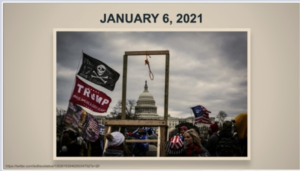 I listened to some of the series of speeches given by House members today, recalling their personal experiences of last year’s insurrection. I would catch a couple speeches, then make a pastoral visit, then hear a few more on my way to a meeting, then a couple more after the meeting was done. Even so, I was struck by how different these speeches were, compared with what usually is said by members of Congress.
I listened to some of the series of speeches given by House members today, recalling their personal experiences of last year’s insurrection. I would catch a couple speeches, then make a pastoral visit, then hear a few more on my way to a meeting, then a couple more after the meeting was done. Even so, I was struck by how different these speeches were, compared with what usually is said by members of Congress.

